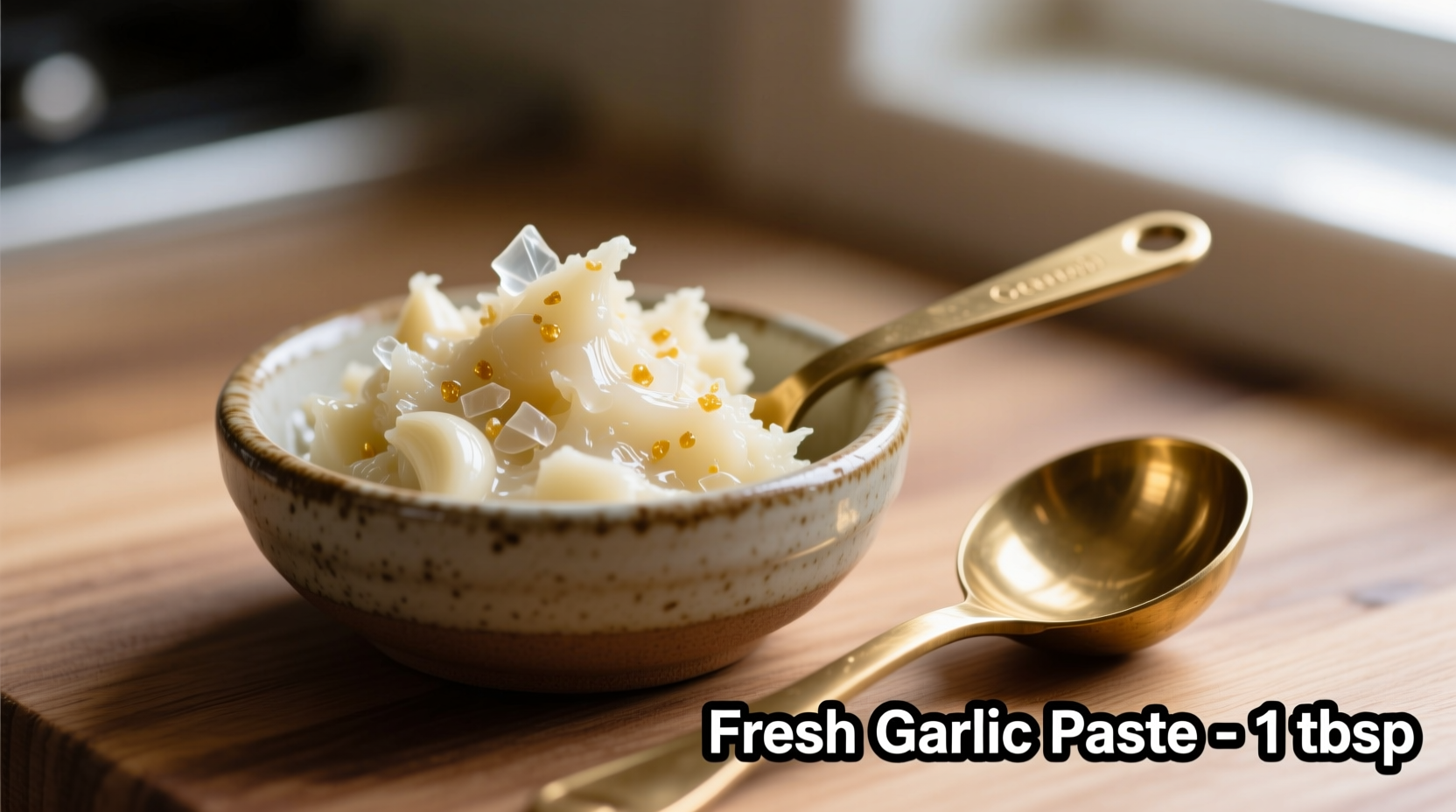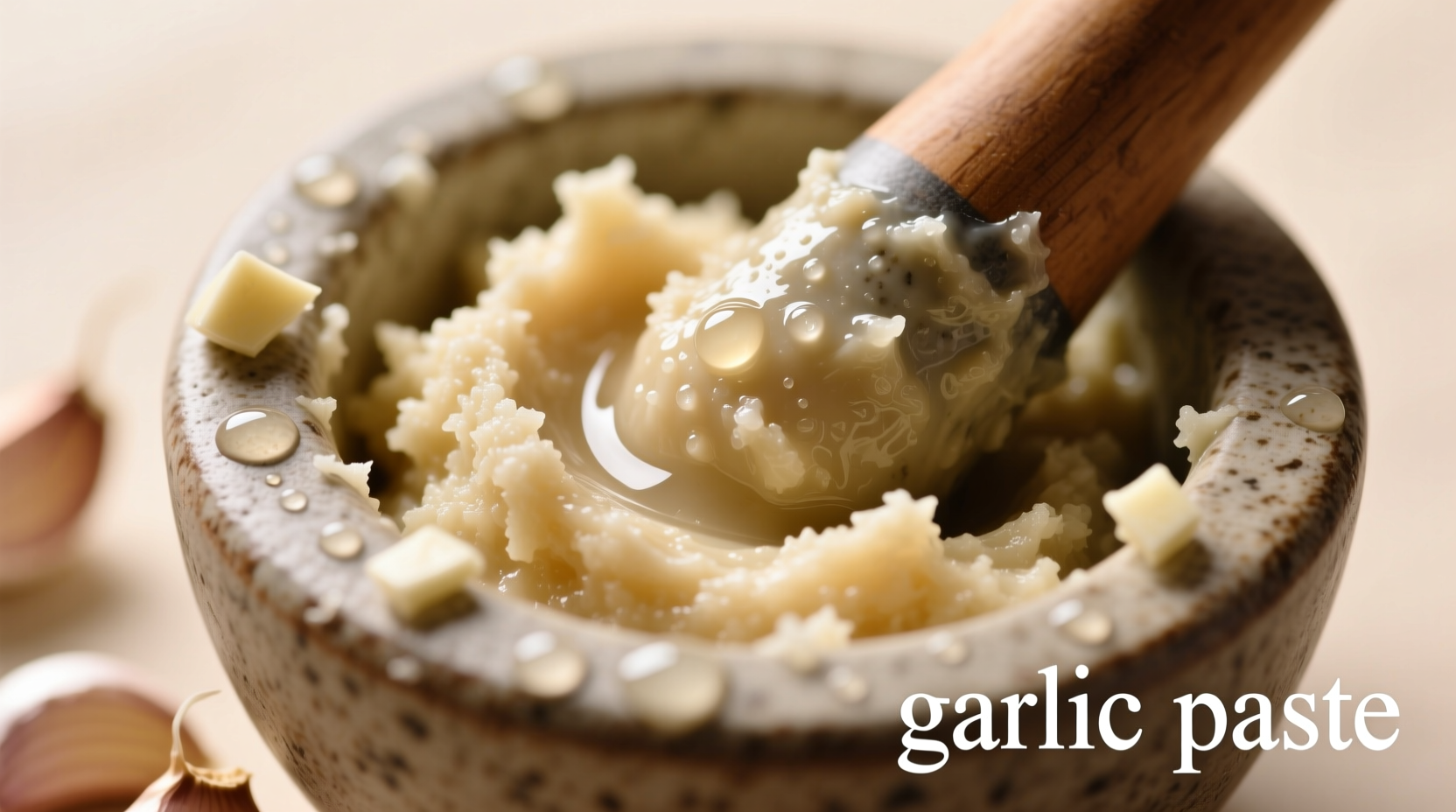Garlic paste is a convenient culinary preparation made from crushed or pureed garlic cloves, often combined with a small amount of oil or preservatives to maintain freshness and prevent browning. Unlike fresh garlic, which requires peeling and mincing, garlic paste delivers consistent garlic flavor with minimal preparation time, making it ideal for marinades, sauces, and quick recipes where uniform distribution of flavor is essential.
The Essential Guide to Garlic Paste: More Than Just Crushed Garlic
If you've ever wondered what garlic paste is and whether it deserves a spot in your pantry, you're not alone. This versatile ingredient has transformed how home cooks and professional chefs incorporate garlic flavor into dishes. Unlike the common misconception that garlic paste is simply minced garlic in a jar, it's actually a carefully processed product designed to preserve garlic's pungent flavor while solving the practical challenges of using fresh cloves.Why Garlic Paste Beats Other Garlic Forms (When It Counts)
| Garlic Form | Shelf Life | Flavor Intensity | Best Uses | Preparation Time |
|---|---|---|---|---|
| Garlic paste | 3-6 months refrigerated | Moderate, consistent | Sauces, marinades, dressings | Seconds |
| Fresh garlic cloves | 1-2 months at room temp | Variable, potent when raw | Roasting, sautéing, whole clove dishes | 5-10 minutes |
| Minced garlic (jarred) | 1-2 months refrigerated | Milder, less consistent | Quick sautés, stir-fries | Seconds |
| Garlic powder | 2-3 years | Muted, earthy | Dry rubs, spice blends | Seconds |
How Garlic Paste Is Made: From Clove to Consistency
The production process determines garlic paste's quality and shelf life. Commercial garlic paste typically follows these steps:- Selection: Only firm, plump garlic bulbs are chosen, with strict quality control for mold or sprouting
- Peeling: Modern facilities use steam or mechanical peeling to remove skins efficiently
- Processing: Cloves are pureed to a smooth consistency using industrial food processors
- Preservation: Most commercial products add citric acid (0.5-1%) and vegetable oil (5-10%) to prevent oxidation
- Packaging: Aseptic filling into tubes or jars under controlled temperature conditions
When Garlic Paste Shines in Your Cooking
Professional chefs reach for garlic paste in specific culinary situations where its properties provide distinct advantages:- Marinades: The smooth texture allows for even coating and better flavor penetration into proteins
- Sauces and dressings: Eliminates the risk of garlic chunks separating or burning
- Time-sensitive cooking: Adds instant garlic flavor without prep time during busy cooking periods
- Consistent flavor: Provides uniform garlic intensity across multiple batches of the same recipe
Storage Secrets for Maximum Freshness
Proper storage dramatically affects garlic paste's quality and safety. Follow these evidence-based guidelines:- Commercial paste: Keep unopened containers in a cool, dark place; refrigerate after opening
- Homemade paste: Always store in an airtight container with a thin layer of oil on top
- Freezing: Portion into ice cube trays, then transfer to freezer bags for up to 6 months
- Never leave garlic paste at room temperature for more than 2 hours (per FDA Food Code guidelines)

Context Matters: When Not to Use Garlic Paste
Understanding garlic paste's limitations prevents culinary disappointment. This ingredient performs poorly in:- Recipes requiring whole garlic cloves: Such as roasted garlic heads or garlic confit
- High-heat applications above 350°F: Paste can burn more quickly than whole cloves
- Dishes where garlic texture is part of the experience: Like garlic bread with visible cloves
- Raw applications requiring sharp bite: Fresh garlic provides more pungency in uncooked dishes
Practical Tips for Using Garlic Paste Effectively
Maximize your garlic paste investment with these professional techniques:- Stir paste into cold liquids first to prevent clumping in hot dishes
- Use 1/2 teaspoon paste to replace one medium garlic clove in most recipes
- Add paste early in cooking for milder flavor, late for more pronounced garlic notes
- Revive dried-out paste by stirring in a few drops of olive oil or water
- Freeze excess paste in 1-teaspoon portions for precise recipe measurements











 浙公网安备
33010002000092号
浙公网安备
33010002000092号 浙B2-20120091-4
浙B2-20120091-4